Physics Heroes & Heroines, Part V
As the fifth in our continuing series of posts about those who have helped advance scientific and engineering knowledge (see Part I, Part II, Part III, and Part IV), we spotlight three notable figures.
Satyendra Nath Bose (1894 – 1974)
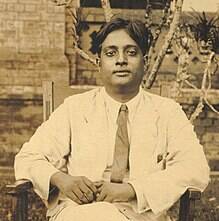
Bose was born in Calcutta, India [Kolkata] and attended the University of Calcutta, where his record high scores on the Master of Science Examination have never been surpassed in more than 100 years. Working with fellow student Meghnad Saha (who went on to become a notable astrophysicist), he published his first book in 1919. He spoke five languages, enabling him to write the book in English based on his own German and French translations of original papers on Einstein’s theory of relativity.
As an instructor at the University of Dhaka, Bose wrote a paper in which he derived Planck’s quantum radiation law without referencing classical physics. Instead, he used a novel method of counting atomic states with identical particles. The paper was not initially accepted for publication, but he sent it directly to Einstein, who translated it into German and submitted it on Bose’s behalf to a prestigious German physics journal.
He gained recognition after the publication and went on to work with Marie Curie, Einstein, and other renowned scientists. In 1924 he published another paper (also in German, with Einstein’s help) called Planck’s Law and the Hypothesis of Light Quanta. In it he postulated that the Maxwell-Boltzmann distribution does not hold true for microscopic particles, an idea that established a revolutionary new philosophical concept of the indistinguishability of particles. It was the foundation of quantum statistics.
Einstein adopted the idea and extended its application to atoms, predicting the existence of phenomena that became know as a Bose-Einstein condensate, a dense collection of bosons. The existence of the phenomena was verified by experiment in 1995. The condensate is formed when low-density bosons are cooled to near absolute-zero temperatures, coalescing into a fifth state of matter,1 where all atoms in the sample occupy the same waveform.
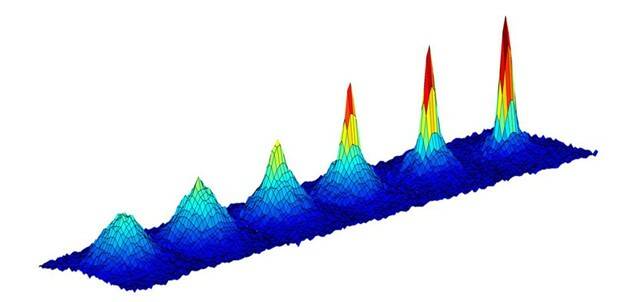
Graph showing the “changing density of a cloud of atoms as it is cooled to lower and lower temperatures (going from left to right) approaching absolute zero. The emergence of a sharp peak in the later graphs confirms the formation of a Bose-Einstein condensate—a fifth state of matter—occurring here at a temperature of 130 nanoKelvin, or less than 1 Kelvin above absolute zero.”2 (Image: Jet Propulsion Laboratory)
Bose was honored by the Indian government and served as president of the Indian Physical Society. He also became a Fellow of the Royal Society in London. While seven different Nobel prizes were awarded for research related to the concepts of the boson, Bose-Einstein statistics, and Bose-Einstein condensate, Bose never received one. But he is reported to have said “I have all the recognition I deserve.”3 Indeed, his name lives on in scientific discussions of these concepts.
Émilie du Châtelet (1706 – 1749)

Born Gabrielle Émilie Le Tonnelier to a high-ranking aristocratic French family, she made her social debut at the Court of Versailles the same year Louis XV was crowned king. At 19, she became the Marquise du Châtelet upon her arranged marriage to the Marquis due Châtelet-Lomont, an army commander ten years her senior.
Despite this rarefied position in a time when women were not accepted into universities or most intellectual or scientific circles, du Châtelet made her mark in the fields of natural philosophy, mathematics and physics, and played an important role in ushering in the Enlightenment era.
Her father was secretary of the French Academy of Science. Recognizing her intelligence and interest as a young girl, he arranged for her to received tutoring in astronomy. She also became fluent in Latin, Italian, Greek and German. It wasn’t until after bearing three children with her husband, however, that she resumed her studies as an adult, avidly pursuing tutoring in algebra and calculus. In one incident, she tried to meet with her teacher at the Café Gradot in Paris, know as a gathering place for scientists and intellectuals. She was promptly ejected because the café was for men only. She returned after having a set of men’s clothes made to disguise herself.
She began a romantic relationship with Voltaire in 1733, which was a long-term intellectual partnership as well. At her country chateau, they set up a laboratory and she was able to continue her work in physics and mathematics. She published several scientific papers, including the Essai sur l’Optique (Essay on Optics), which was thought to be lost until a copy was found in 2007 in the Bernoulli archives in Basel, Switzerland.
In 1740 she published Institutions de Physique (Foundations of Physics), in which she discussed the concepts of Descartes, Newton, and Leibniz, philosophy and mathematics, and new ideas in physics. It was widely read and published in multiple languages and led to her induction into the Academy of Sciences of the Institute of Bologna.
She translated (and commented on) multiple works by previous scholars, including Mandeville’s Fable of the Bees, and was the first to express the concept of conservation of total energy (as distinct from momentum) and kinetic energy. She was well-known during her lifetime, corresponding with leading figures such as Bernoulli and Euler, and many of her ideas were later incorporated into Diderot and D’Alembert’s scientific encyclopedia (Encyclopédie ou Dictionnaire raisonné des sciences, des arts et des métiers, 1765).
She is best known now for her complete French translation of Newton’s seminal treatise, Principia—it is still the translation in use today. She died from complications following the birth of her fourth child in 1749.
Augustin-Jean Fresnel (1788 – 1827)
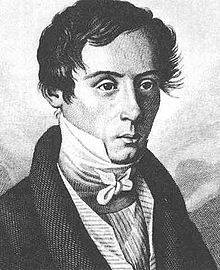
Born in Normandy during the French revolutionary period, Fresnel’s father was an architect. He trained in Engineering and took his first professional post as a member of the Corps des Ponts et Chaussées (the Corp of Bridges and Roads, the French equivalent to the US Army Corps of Engineers), where he remained for most of his career.
He became interested in optics and the properties of light, and in 1814 began researching diffraction, polarization, and the wave theory of light, paralleling research by English scientist Thomas Young, who suggested wave theory explained the light interference patterns he observed in his double-slit experiments in 1804. Fresnel started with Dutch scientist Christiaan Huygen’s mathematical description of diffraction. Huygen’s principle stated that every point on a wave front can be considered a secondary source of spherical wavelets.4
Wave theory contradicted Sir Isaac Newton’s particle explanation of light. Fresnel submitted his research on diffraction to a competition by the French Academy of Science in 1819. Although skeptical, the committee performed an experiment to test Fresnel’s evidence of wave theory and found it to be sound, awarding him the prize. However, wave theory did not provide a sufficient explanation of polarization behavior in light, so Fresnel continued his research and discovered evidence that light was not a longitudinal wave but a transverse wave.
He went on to work on a committee to improve French lighthouses, which led to experiments with glass and lenses. In 1824 he designed a fixture with multiple prismatic rings that could produce several revolving beams from a single light source. It used both reflection and refraction, and a steeper angle of incidence to focus more of the rays horizontally to increase intensity. This design is called a catadioptric system, also known as the Fresnel lens.
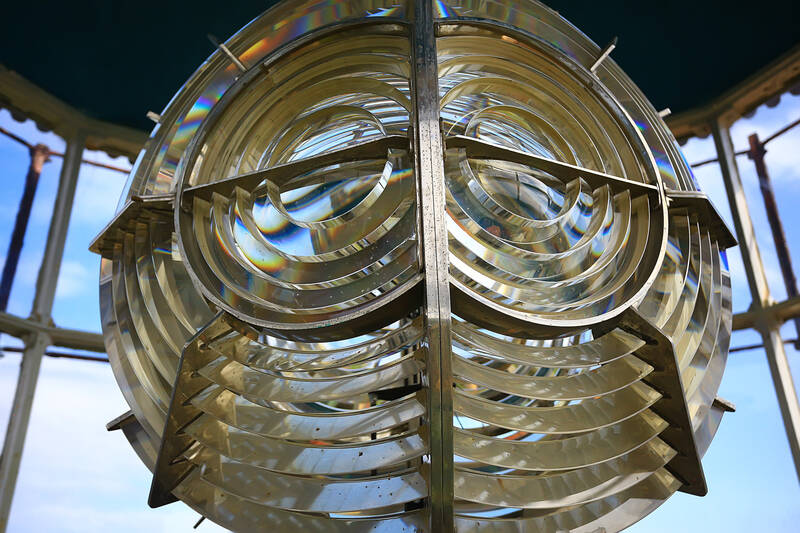
Many lighthouses around the world still use Fresnel lenses.
Today, Fresnel lenses are still widely used for light collimation, light collection, and magnification. Modern Fresnel lenses “consist of a series of concentric grooves etched into plastic. Their thin, lightweight construction, availability in small as well as large sizes, and excellent light gathering ability make them useful in a variety of applications. Fresnel lenses are most often used in light gathering applications, such as condenser systems or emitter/detector setups. They can also be used as magnifiers or projection lenses in illumination systems, and image formulation.”5
For example, Fresnel lenses can be found in some AR/VR devices, projection televisions, and view cameras. They are also used to concentrate sunlight onto solar cells, magnifying the radiant power up to 500 times.
Maria Goeppert-Mayer (1906 – 1972)
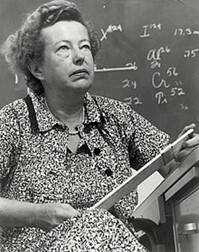
Born in Germany as Maria Goeppert, she attended the University of Gottingen, writing her doctoral thesis on the theory of possible two-photon absorption by atoms. The later development of lasers enabled her theory to be verified, and today the unit of measurement for the two-photon absorption cross-section is named the Goeppert Mayer (GM) unit.
After marrying American Joseph Edward Meyer, a Rockefeller fellow and associate professor at Johns Hopkins University, she moved to the US in 1930. University nepotism rules prevented her from being on the faculty, but she worked in a staff role at Johns Hopkins, where she wrote and published a landmark paper on double beta decay in 1935.
In 1939 she and Mayer went to Columbia University, where she worked at the Substitute Alloy Materials (SAM) Laboratory, directed by Harold Urey. She contributed to the Opacity Project, which was the effort to separate isotopes of uranium. In 1941 she joined the Manhattan Project, working with Edward Teller at Los Alamos National Laboratory on the development of the atomic bomb.
Following World War II, she became associate professor of physics at the University of Chicago and a senior physicist at Argonne National Laboratory, alongside Teller and Enrico Fermi. Although she protested that “I don’t know anything about nuclear physics,” she programmed the Aberdeen Proving Ground’s ENIAC system, enabling it to solve criticality problems for a liquid metal-cooled reactor using the Monte Carlo method.6
In 1950 she published a paper on a new mathematical model she had developed to characterize the structure of nuclear shells. Her model explained why atomic nuclei that contain certain numbers of nucleons are particularly stable. These numbers (2, 8, 20, 28, 50, 82, and 126) have been called “magic numbers.” She went on to collaborate with Hans Jensen, a German scientist who was working on the same topic, and they co-authored a book, Elementary Theory of Nuclear Shell Structure. In 1963, she shared the Nobel Prize in Physics for this work—only the second woman in history (after Marie Curie) to receive a Nobel.

The shell model of the nucleus. (Image: Source)
For the last part of her career, she taught at University of California, San Diego, and was elected a Fellow of the American Academy of Scientists.
CITATIONS
- “Bose-Einstein Condensate Graph.” Jet Propulsion Laboratory, July 27, 2018
- Ibid.
- Alikhan, A., "The Spark in a Crowded Field." Outlook India, July 16, 2012.
- “Augustin-Jean Fresnel.” Britannica. (Retrieved January 31, 2022)
- “Advantages of Fresnel Lenses.” Edmond Optics. (Retrieved January 13, 2022)
- Sachs, R., Maria Goeppert Mayer 1906–1972: A Biographical Memoir (PDF). Biographical Memoirs. National Academy of Sciences, 1979.
Join Mailing List
Stay up to date on our latest products, blog content, and events.
Join our Mailing List
